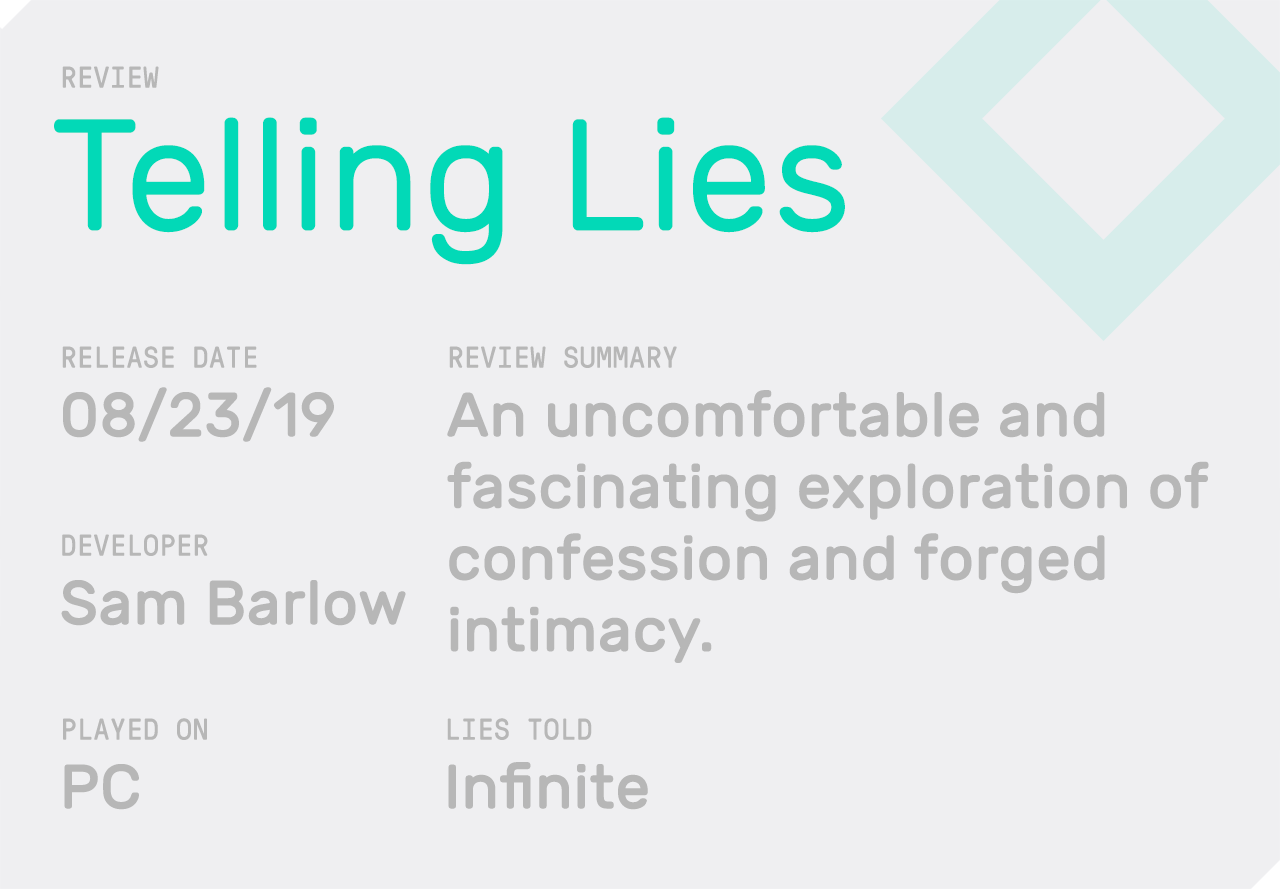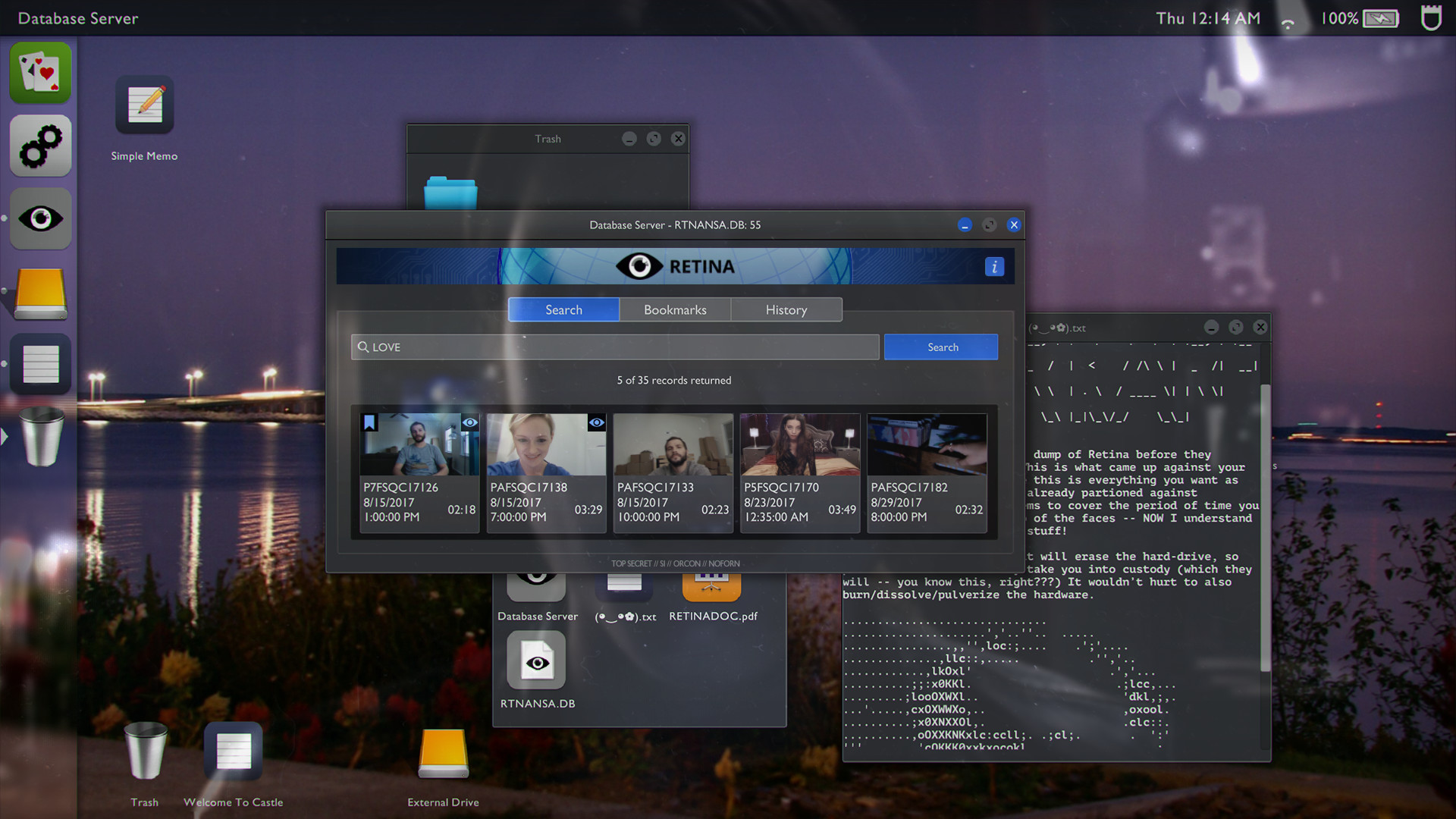‘Telling Lies’ Makes the Pursuit of Truth a Powerful Illusion
Credit to Author: Cameron Kunzelman| Date: Fri, 23 Aug 2019 17:22:40 +0000
Telling Lies works like the creation of a conspiracy theory. It asks you to paint a mental picture of, at a minimum, four different characters, their motivations, their names, their jobs, their lives, and the connections between them, and it wants you to do that by sifting through those lives in the form of video documents. And after putting three hours into the game, I came away unsettled by the experience. I was snooping, and that was weird, but I also felt like I had a handle on everything that happened. Then I didn’t. Then I did. After playing, I’m still trapped in this ambivalent space of not knowing if I have the whole story, or even what the truth is. That’s special.
Telling Lies is played through a data-digging interface much like director Sam Barlow’s Her Story, which appeared in 2015 and impressed people with its nonlinear and open story. In Her Story, you watched a snippets of interrogation footage with a single woman, centering on events you had to arrange into a coherent narrative. Telling Lies asks the player to do the same work but with a much larger corpus of information of a very different nature.
The vast majority of Telling Lies is made up of video calls. These videos, backed up by some kind of government surveillance apparatus, are all one side of a call. You play the game through the eyes of someone trawling through this database, looking into a screen where someone else always seems to be looking into your eyes, sometimes like they love you, and usually telling you a story. Like the title says, sometimes they’re lying. And sometimes they’re telling the truth, an evocative and wonderful and well-delivered truth, and that makes it even stranger, even sadder, even more warped to be on the receiving end of.
You see, I spent the first fifteen minutes of the game staring into Logan Marshall-Green’s eyes and taking what he said at face value. On these one-sided calls, where I’m implicitly in the position of the party being spoken to, there is this constant sense that this performance is for me, that there is a special linkage between his smile and his glances and his pauses that should confer on me a quality of being special.
This dynamic is the basis of cam modeling, a form of sex work where a performer puts on a livestreamed, interactive video show for an internet audience.So when Angela Sarafyan shows up as a cam model to create further complications in the plot, I wasn’t surprised. While Telling Lies might focus on lying and its consequences and its capabilities, it is also about the power of sight. Who can see, and under what conditions, and to what end? Does sight confer truth? Does someone telling you something, and then providing you with visual confirmation, give you the fact of the matter? The game stages this power dynamic most clearly not through its discussions of surveillance (which are plentiful), but through Sarafayan’s character’s relationship to the people she cams for. As the only person who actually understands the dynamic at play, the cam model repeatedly appears to tell us that any sense you have of completeness or coherency is just that: a sense, not a fact.

These conceptual alliances across the game are what makes Telling Lies so interesting. After all, these direct address video calls have huge gaps where the player can hear nothing and where characters are looking with smouldering eyes directly into the camera, and I think someone who bounces off the experience might see that as a kind of mistake or something to be skipped through. You are not getting only the “meat” of these video recordings. You’re getting all of it, the pauses and the long listening sessions, but when that resonates across Sarafayan’s performance, things light up. What makes this whole game go is that the player ends up doing so much of what she does: listening and responding with questions about the video calls in front of her. You, like her, are watching the world happen in front of you and you’re responding in such a way that keeps it rolling on.
And that’s also what makes Telling Lies so fascinating and conspiratorial. I want to believe. Marshall-Green is telling me falsities, but I want them to be true. Characters are pouring their hearts out to me, and sometimes it’s clear that they’re lying, but I want to believe them. I want to be able to type new search terms into the program and follow the white rabbit. The act of playing is the search for connection.
Every time I learn something new about this world, I am plugging it back into my mental model and trying to figure out what I know about these people and their connection. I want it to all make sense despite multiple characters telling implicitly that I am a fool for doing this, I still think that I have an understanding of their motivations and ideals and goals. And at the end of a few hours, I think that I get these people. I think I have it all solved out.

But I’m unsettled by that feeling, and that’s maybe the most interesting part about Telling Lies. Through all the twists and turns, your very notion of truth gets splintered, but you’re still holding out for a truth, the one that solves the whole thing in the end. When you’re done with the game, or at least when you need to take a big break, you’re left with the last model of truth you had. That’s reality. That’s the fact of things.
Yet the strength of Telling Lies is that I still can’t unsummon the little worm in my head that’s telling me that I still don’t have the full picture. All those ideas that I had before the end? Those were conspiracies. Now I have the truth. Or, well, do I? What’s the sufficient amount of information that will allow me to say that I know this world. How can I get to the root of the thing? At the end of the story I managed to cobble together, I know who everyone is and what they did and how it all shook out. But I’m also afraid that I don’t. And it makes me want to get out my corkboard and string and dig through some more video files.
This article originally appeared on VICE US.